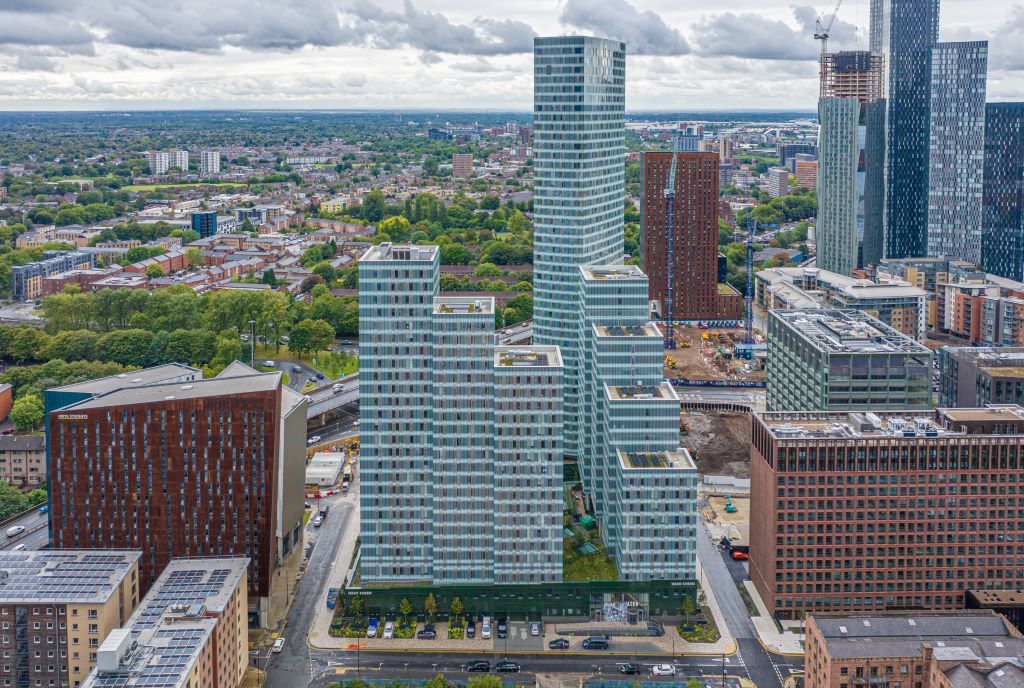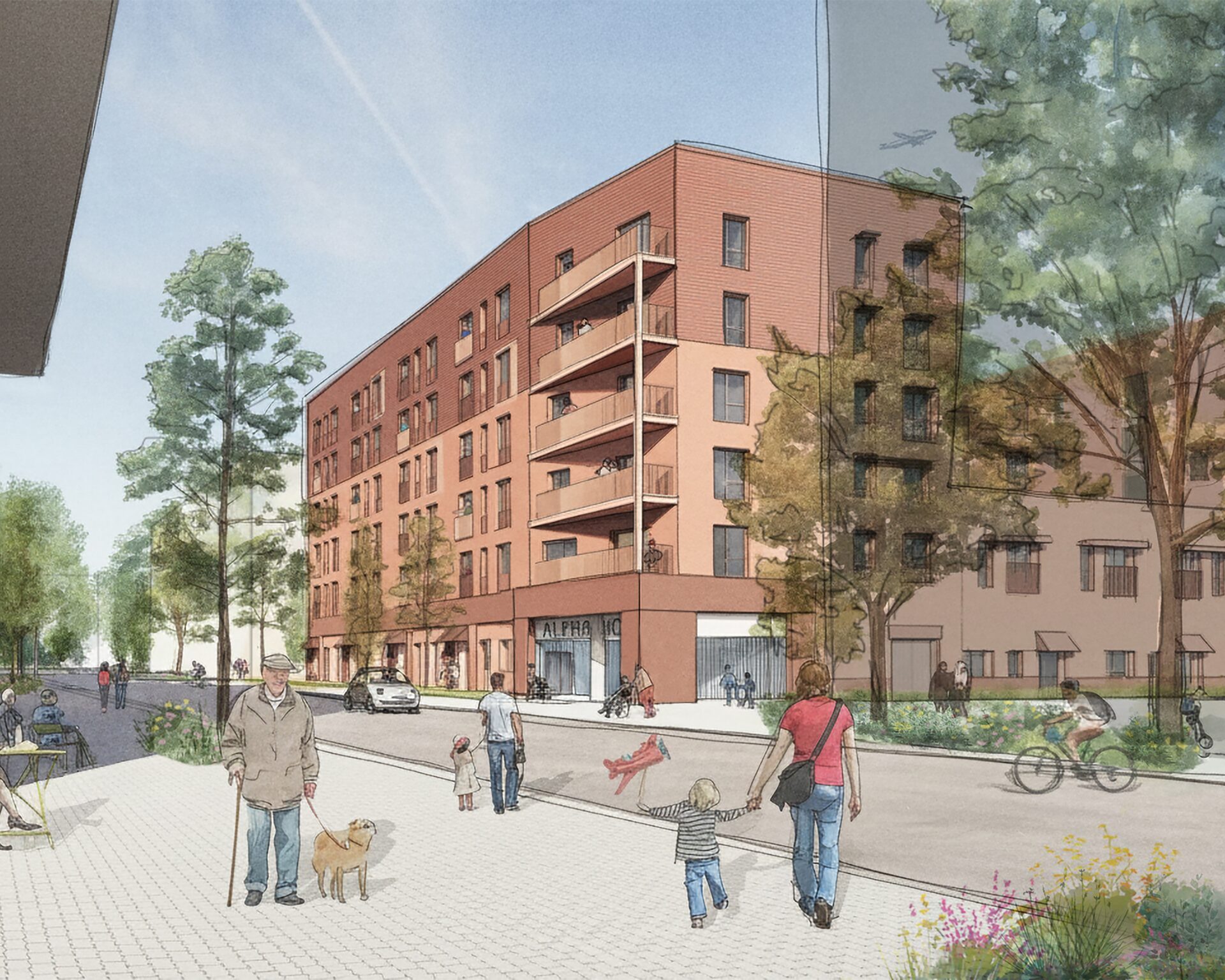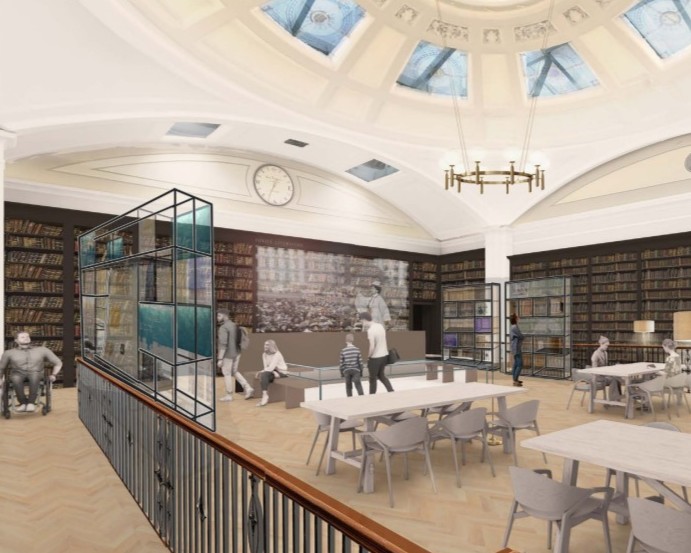Downing’s co-living ‘blueprint’ reaches full occupancy
All 1,772 co-living units at Square Gardens in Manchester have been snapped up – a sign of growing demand for this type of accommodation, according to the developer.
Work on the co-living element of Downing’s First Street development is complete and both the 25-storey Acer and the 45-storey Fernley have reached full occupancy.
Residents living at Square Gardens come from more than 60 different countries and are aged between 18 and 58. The mean age is 23.
While clearly popular, co-living as a concept has divided opinion historically. Proponents claim it fills a gap in the housing market, offering communally minded young professionals, students, and graduates the chance to live independently in managed accommodation at a cheaper price point than build-to-rent.
Critics say the model takes advantage of renters in need of a home and allows developers to maximise profits by delivering a high number of small units within their developments.
The success of Square Gardens does little to disprove either argument; there is evident demand but whether that is being driven by the inherent desirability of co-living or a lack of alternative options is unclear.
Sally O’Brien, joint chief executive at Downing, said her firm’s scheme is a sign of the direction cities are moving in.
“Square Gardens is more than a housing development, it’s a blueprint for how city living is evolving,” she said.
“The response has been overwhelming and shows just how much people want flexibility, connection and a ready-made community at the heart of Manchester.
“With national demand for co-living now far exceeding supply, Square Gardens is a powerful example of how this new way of living can thrive in UK cities.”
A shortage of high-quality purpose-built student accommodation means that many co-living developments nationally are home to a proportion of students. Research from Savills estimates this to be around 20% in London.
Savills’s study also states that Manchester has a 10,000 shortfall of PBSA beds, forcing students into BTR and co-living schemes.
This is bad news for the city council, which is missing out on hundreds of council tax payments every month as a result.
Rents at Square Gardens start at £225 a week, which includes all utility bills and 20% of the units are designated as affordable. The scheme also offers up a high-end product – 18 luxury penthouses known as The Residencies, available from £520 a week.
“What we’ve created is not just housing, but a genuine community designed around the needs of today’s renters,” O’Brien added.
“Now that we have debuted our co-living offering, we’re looking forward to what the future holds for this fresh way of living, across our portfolio and the wider market.”
The only other co-living scheme in Manchester of a comparable scale to Square Gardens is Vita Group’s Union development on Water Street. In neighbouring Salford, the model has had more limited cut-through. The city council approved its first ever co-living development last year but others remain stuck in planning purgatory, suggesting a continued unease with the product among members.





£900 a month for a 15m2 box with ensuite?!? It seems to me that this type of development is only popular with international students from rich backgrounds and these co-living are one of the few places who will happily take the risk on them. A lot of BTR places ask for references and rent upfront.
By Anonymous
It’s a sign that the Central Manchester property bubble is getting very near bursting. And MCC needs to decide politically whether warehousing grown wage-earning, tax-paying residents in halls of residence is either a good thing, or going to end well.
By Rotringer
How much parking?
By Anonymous
Up there with the absolute worst architecture the city has seen in recent times.
By Anonymous
A very dark point for Manchester. They’ve been “snapped up” because young professionals, even while working full time are desperate, already deeply in debt and priced out of a Northern city. Guarantee the shareholders and architect of this glass slum have never (and would never) live in a place like this, nor did they have to at the age of 23. Appreciate PNW posting the mean age too, highlighting young adults not long out of Uni and with limited life experience clearly being taken advantage of. The PR made me chuckle too, simply add the word “Community” to anything to make it sound warmer than a the dystopian nightmare it truly is. Hopefully Liverpool will continue to block these types of greedy developments.
By Tony
Er, have you thought of asking the tenants what they think of their living experience, VFM etc, that surely would get us closer to answering the question…
It looks a great scheme, ideally located, well serviced for food and socials, not like some of the earlier rabbit hutch offerings in marginal areas (Beech’s West Point?) – surely co-living has a place in the mix, but it has to be the right place.
By In search of truth
The tower is ok but the rest is a lazy architectural mess. A horrific missed opportunity
By Legacy
If co-living can replace HMO’s in suburban areas it will be great addition to the city, needs scale and a co-ordinated approach across the city to prevent HMO approvals and give the suburbs back to families.
By Anonymous
I wonder if free range workers are more expensive than the battery farm varietal
By Anonymous
The facade looks pixilated.
By Anonymous
When I was a student there weren’t enough halls of residence so I ended up in a very poor and expensive HMO with no heating and a landlord that wouldn’t fix things.When I got my first job I was still in a HMO for quite a few years although this time with heating but not in the best state of repair. I can’t say it was the best experience although looking now at PBSA, Co-Living and BtR multi family makes me think we have come a long way with whats on offer. Certainly there is a wider point on current housing market dynamics and peoples ability to get onto the hosuing ladder although I can see this type of scheme has its time and a place for people.
By Rodney Street
Much less of this and much more of House of Social, which is next door.
By Thank U, Next
looks good in the dark
By Tannoy
Not one of Simpson Haughs best buildings.
Full of students not ex students starting their first job in the city. In reality a glorified PBSA scheme hiding under the “co-living” title.
By Anonymous
Any room at the top?
By Anonymous